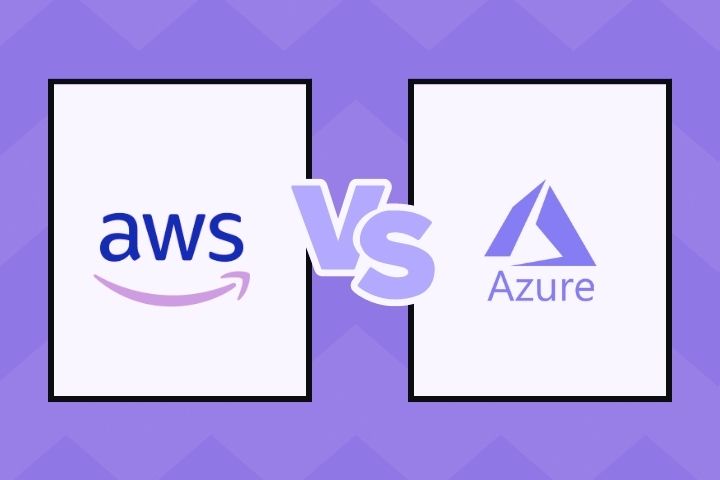
With the emergence of cloud computing technology, companies are moving applications to the cloud. Cloud Providers Amazon Web Services (AWS) and Microsoft Azure are in huge demand. However, organization’s still need clarification about choosing the correct cloud provider Aws vs Azure, to fulfill their requirements and specifications.
AWS: Pioneer and market leader
As the first significant player and market leader in the cloud computing arena, the name Amazon naturally carries some weight, even if Microsoft has long since caught up with the Internet giant.
However, even among IT professionals, there is still a widespread belief that AWS is better suited for highly scalable web applications many users use.
For example, AWS EC2 is used by the streaming service Netflix and the housing agency Airbnb, which use the platform to interact with their customers across the globe.
Azure: Versatile and easy to use – at least in the Windows environment
On the other hand, Azure is considered easier to use – at least in Windows environments of smaller companies that do not run highly scalable applications.
And the ease with which cloud servers can be set up in Azure and integrated with other Microsoft products makes the transition to cloud-based infrastructure easier for many companies.
Costs are difficult to compare.
Amazon and Microsoft offer a variety of cloud instances of different sizes to meet the needs of businesses of all sizes. The pricing structures are similar; however, Azure includes a certain amount of storage capacity in the price, while AWS requires customers to purchase storage separately.
This means additional costs and less transparency overall. On the other hand, many IT pros say that AWS storage can be better tailored to their needs, which is a definite plus.
On both platforms, the costs vary depending on how often companies use their cloud instances, how much performance and capacity they need, how much data is transferred, and whether they value sophisticated functions such as load balancing or auto-scaling.
The different rounding models also have a not inconsiderable influence on the costs: Microsoft rounds up to the next minute when calculating usage, while Amazon rounds up to the next hour.
Technical support
Aws vs Azure offer different levels of technical support – depending on how quickly the problems need to be solved and whether customers want a dedicated contact person in the company.
However, what distinguishes both providers is: With Azure, technical support is billed via a monthly flat rate fee.
With AWS, on the other hand, support costs depend on monthly usage, which can quickly add up.
Reliability and uptime times
Aws vs Azure aim for service availability of more than 99.95 percent. And both pay their customers back if uptime falls below this value. That can happen.
Both Amazon and Microsoft have had periods of repeated outages. Popular services such as Netflix or Office 365 have also been affected.
Setup and Ease of Use
Azure is, of course, a home game for Windows administrators. Integrating Windows servers and cloud instances – for example, to set up a hybrid cloud environment – is easy.
An Azure instance consists of a virtual server that runs under Hyper-V and allows you to log in using a remote desktop client with full administrator rights.
Finally, Azure instances work seamlessly with other Microsoft cloud services such as Azure Active Directory and Azure SQL Database.
AWS has a highly configurable offering with a wide range of functions that one must first familiarize themselves with. But if you make an effort, you will also benefit from a platform that offers plenty of power, flexibility, and customization options and supports many third-party providers.
And AWS is the perfect platform for hosting Linux instances.
Conclusion
Azure and AWS are solid IaaS platforms with pros and cons. Which one is more suitable in practice depends on individual requirements. It is advisable to start with a free trial version.
This allows users to determine which provider best meets their requirements without any financial outlay. And if costs play a decisive role: With the help of an online cloud calculator, it is easy to estimate how much money you spend on IaaS every month.
Cloud monitoring tools are also helpful. Businesses can use it to track current IaaS usage and be automatically alerted when their cloud costs spiral out of control. This can help in selecting cloud provider Aws vs Azure









